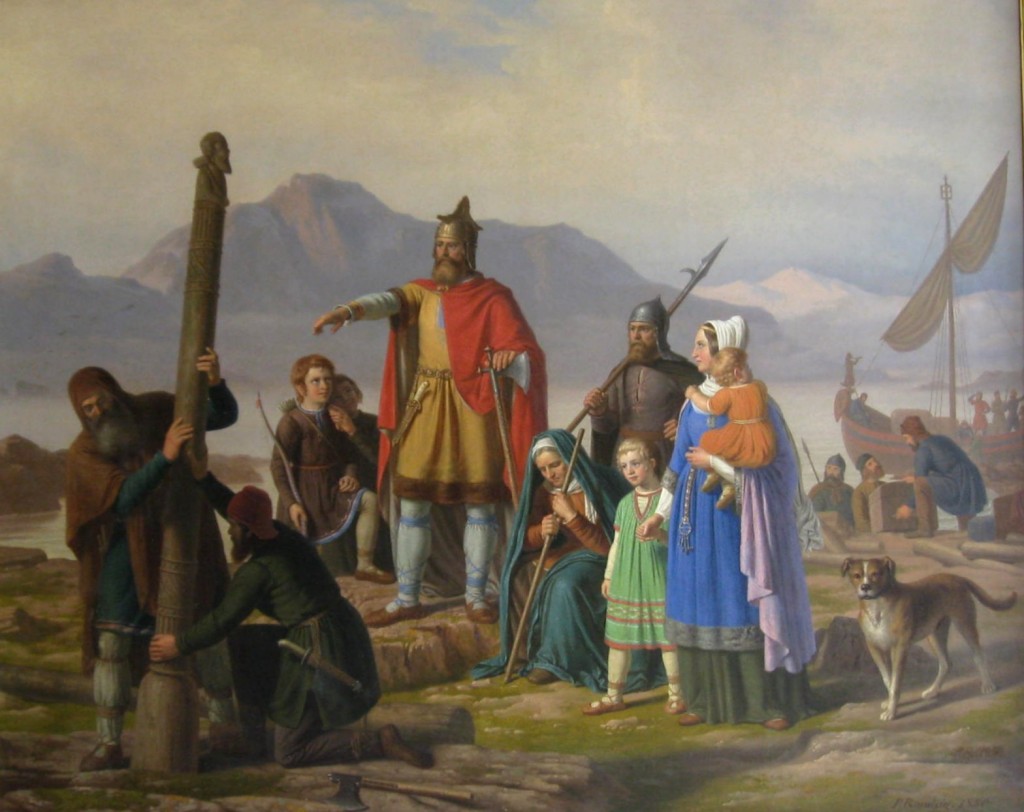Iceland, considering its small population (329,100 at last count), has produced a phenomenal amount of rock music that has reached a global audience. It’s as if Oshawa, Ontario or Eugene, Oregon each had a half-dozen world-level bands. Absurdly improbable, when you think of it. Reykjavík is a lively little city, but its frisky music scene, what Icelanders call jammið, is confined to a handful of clubs in the “101” district: Café Rosenberg, Kaffibarinn, Bar 11, Dillon, Den Danske Kro, The Celtic Cross, The English Pub. After making the rounds, people stagger outside to find a hot dog or a crushed sheep’s head as a post-gig snack. The hard-drinking Icelanders take their jammið seriously. Bands and audiences mix freely in this profoundly informal and egalitarian country. This small, but intense scene has produced phenomena like the Sugarcubes and Björk, Mínus, Sigur Rós, Quarashi, Sálin, Botnleðja, Maus, Agent Fresco, Samaris, Mammút, and Jakobínarína.

Ingólfr Arnarson founds the first settlement at Reykjavík in 874 A.D., laying the groundwork for jammið and the Icelandic music scene. He appears to be standing precisely at the spot where Kaffibarinn stands today. An 1850 painting of dubious historical accuracy by Johan Peter Raadsig.